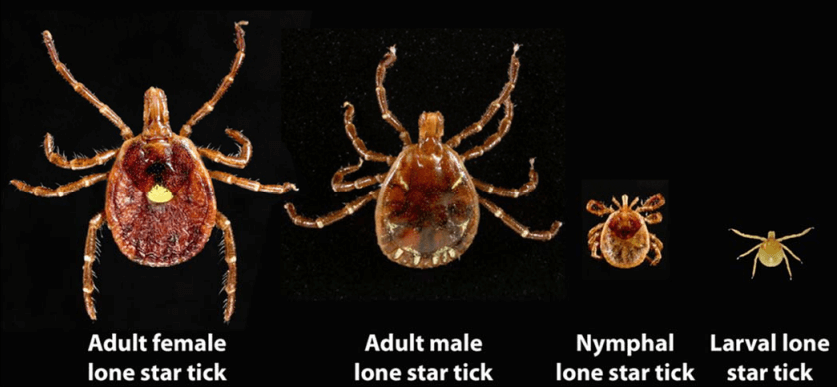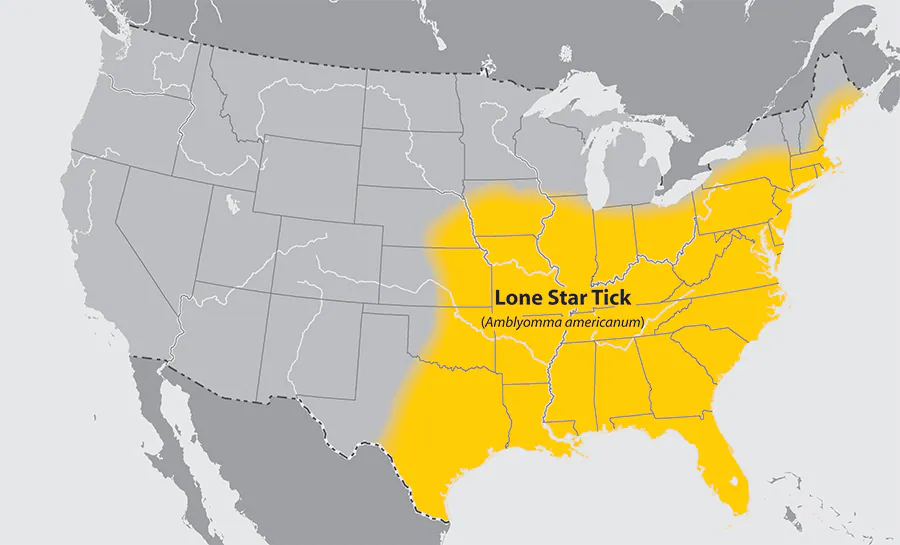Lone Star Tick
Amblyomma americanum

The bite of the lone star tick, Amblyomma americanum, is known to be the main causal factor of AGS in the U.S., while some other species of tick bites are also known to be AGS elicitors in other parts of the world. The tick saliva secreted into the human host contains alpha-gal and numerous biologically active (harmful) components.
The lone star tick adults are relatively easy to distinguish: ~1/6 inch long and four pairs of legs. Female has a white dot on the back while male has white small patches on the edge of the back (see pictures on CDC). The lone star tick is also an important vector of the pathogens, Fransicella tularensis, Ehrlichia chaffeensis, E. ewingii, Bourbon virus, and heartland virus. The seed ticks are the young (larval nymphal stages) of the tick. For AGS patients, avoiding additional tick bites is very important to avoid the symptoms from worsening.
Frequently Asked Questions
In Kansas, where are lone star ticks mainly found?

In Kansas, the lone star tick, the AGS elicitor, is mainly found in the Eastern half of the state, while the tick range is being expanded toward Western Kansas, likely due to climate change. American dog tick, Dermacentor variabilis, known to be carrying Rocky mountain spotted fever is also the tick frequently found in Kansas. In addition, brown dog tick (Rhipicephalus sanguineus), Gulf coast tick (Amblyomma maculatum), and Blacklegged tick (Ixodes scapularis) are the ticks known to be in Kansas.